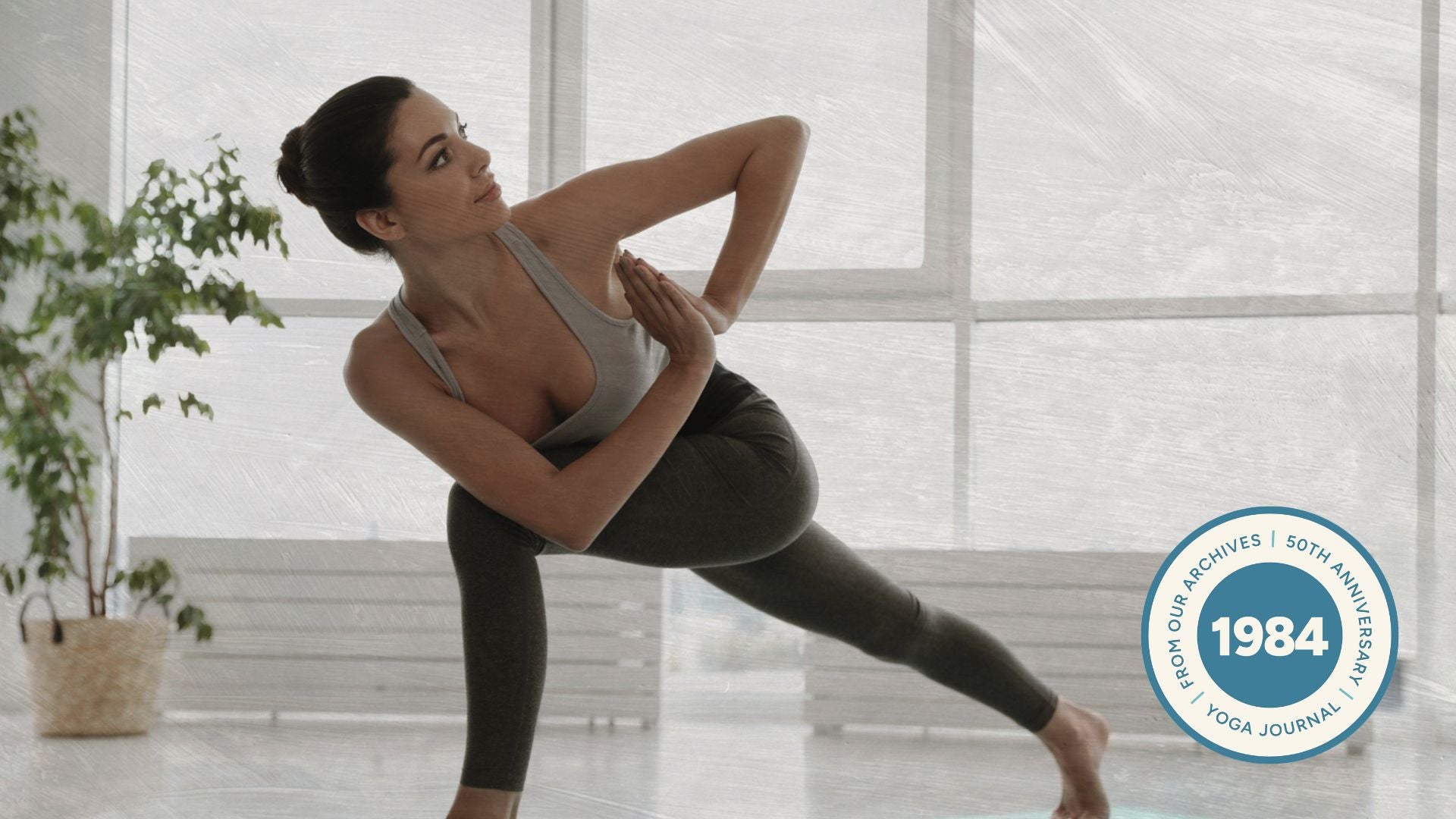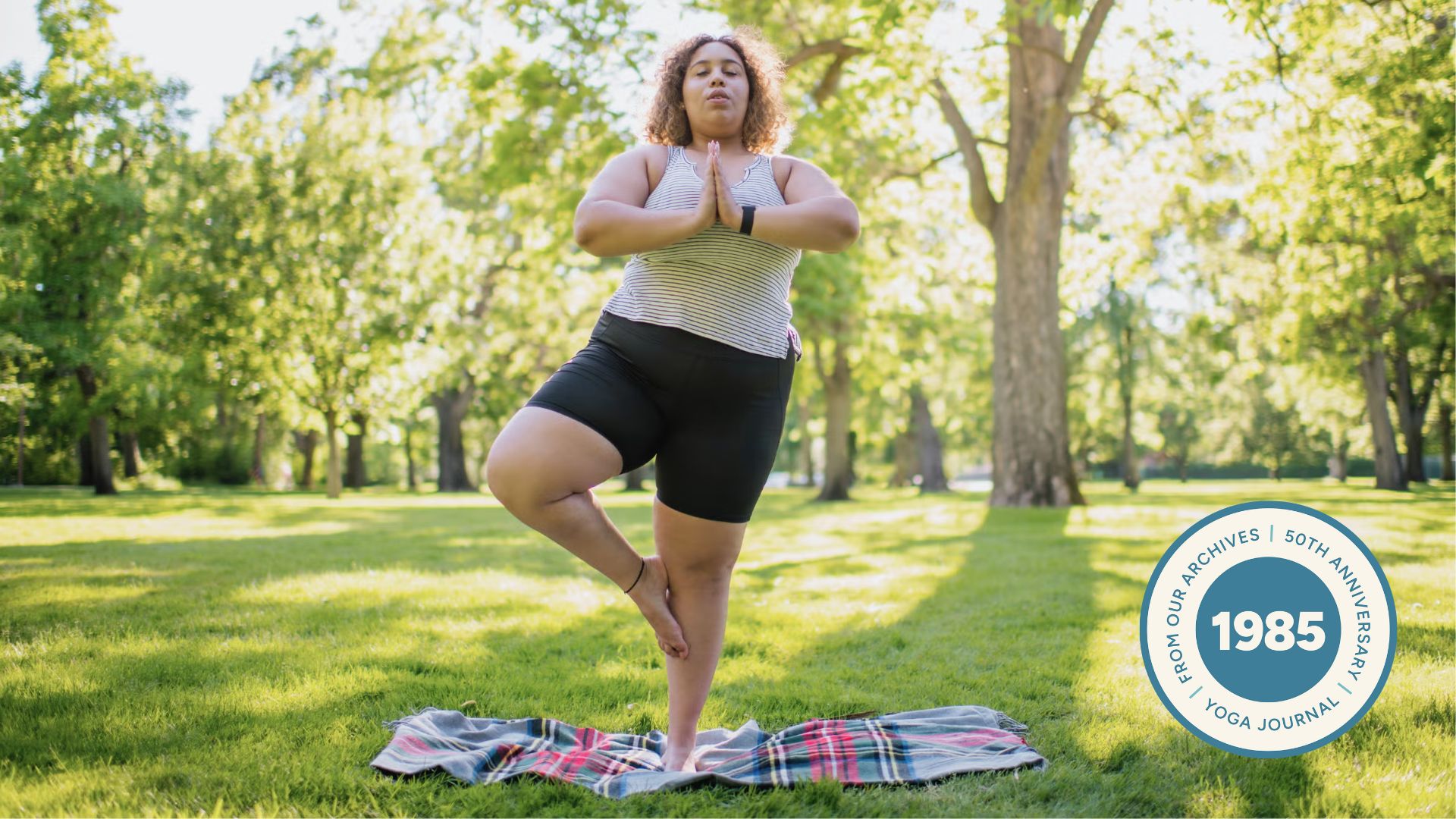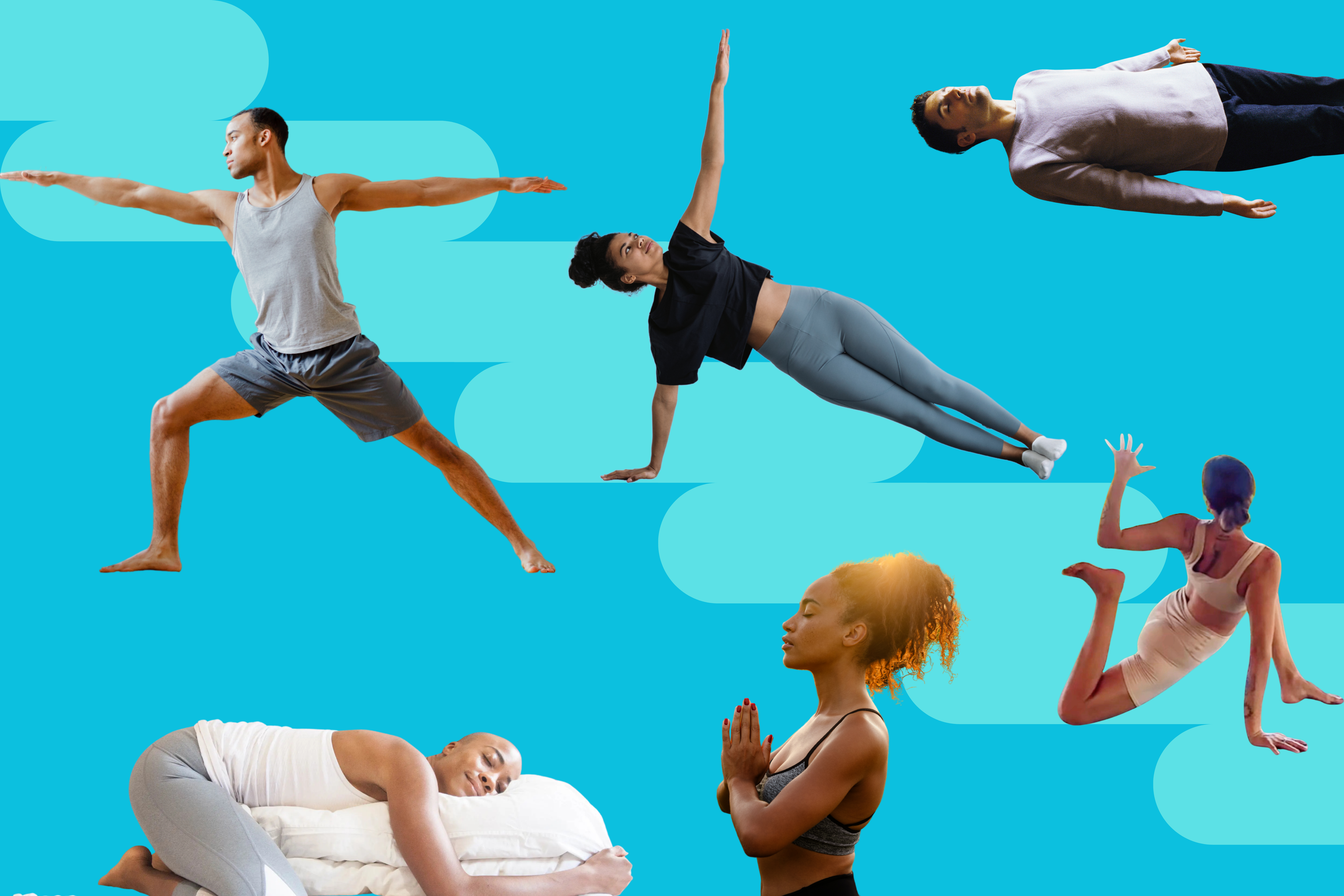“], “filter”: { “nextExceptions”: “img, blockquote, div”, “nextContainsExceptions”: “img, blockquote, a.btn, a.o-button”} }”>
Heading out the door? Read this article on the new Outside+ app available now on iOS devices for members!
>”,”name”:”in-content-cta”,”type”:”link”}}”>Download the app.
Restorative yoga is all about chilling TF out. Fans of “cozymaxxing“—aka creating an ultra-cozy environment—will appreciate this style of prop-supported poses for its soothing, tranquil, and accessible approach, which brings on a full-body exhalation when you’re feeling overwhelmed.
According to yoga teacher Tamika Caston-Miller, restorative yoga is sort of like a rest rehearsal. You basically practice unwinding so you’re better able to rest with challenges, grief, and anything else that tends to interrupt your ability to recharge. Consider it a means of cultivating a lifelong relationship with rest.
And while in-studio restorative yoga classes tend to be a luxurious experience, the practice can be even better—and cozier—when done in the comfort of your own space.
Making Your Home Restorative Yoga Practice Cozy
“Restorative yoga is uniquely suited to be done at home,” says Caston-Miller. “You can linger for as long as you’d like and you have more available props than in most studios.” Caston-Miller recommends practicing in a darkened room and gathering all of the snuggliest, most supportive accessories you can get your hands on. These include, but are by no means limited to, the following:
- A pair of super soft socks
- A thick blanket (to be laid atop your mat or over your body)
- An additional 3-5 blankets (like we we said, comfy)
- Soft pillows (Caston-Miller opts for faux fur)
- Bolster or bed pillows
- Ottoman or chair
- Eye pillow or covering
- A favorite lounge outfit
Once your collection of cozies is amassed, these poses will help you take your relationship with rest to the next level.
5 Restorative Yoga Pose with Props
Feel free to take these quieting restorative poses on your couch, bed, even your backyard.
1. Child’s Pose with Bolster
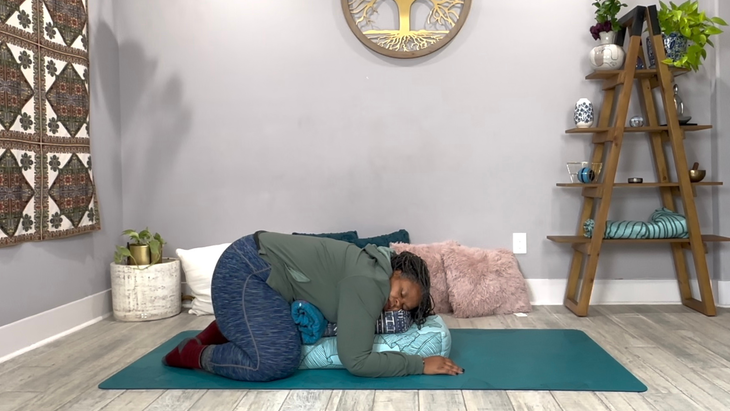
Child’s Pose may be a pause during most vinyasa yoga practices, but in restorative yoga, the pose calls for far more time. Caston-Miller notes that it becomes “incredibly juicy” when done at home, especially in bed with ample pillows.
The yoga teacher discovered the power of Child’s Pose while dealing with lower back pain during vacation. “I grabbed all of the pillows available, put them between my torso and my body, and stayed in supported comfort for 20 minutes,” she says. “After I finally came out, I felt like a brand new person. I’ve never been able to recreate that level of comfort in Child’s Pose in a studio.”
How to: Start by kneeling on the floor or your bed. Bring your toes together to touch, sit back on your heels, and separate your knees about hip distance. Exhale to fold forward onto stacked pillows beneath your chest. You can also bring pillows behind your knees, the better to reduce pressure on your knees and ankles. Stay here for as long as you desire.
2. Half Legs Up
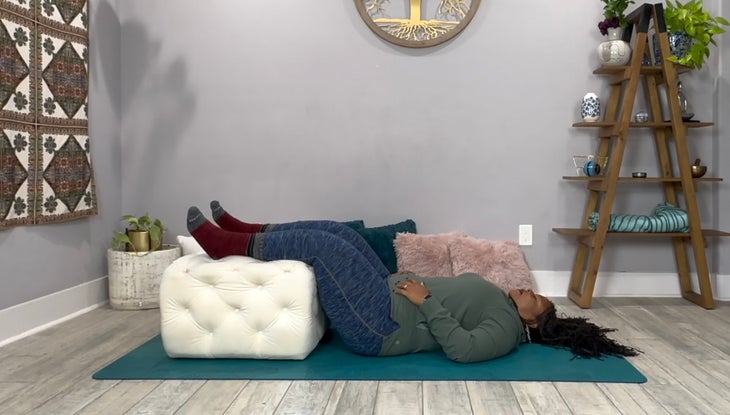
While full Legs Up the Wall offers copious benefits, a half version can be a touch more cozy. “This can easily be done by lying on the floor and placing your legs onto a sofa—my favorite is to lie on the sofa and put legs over the arm of it,” says Caston-Miller. “There are no pressure points on a nice, soft sofa. I’ve never had a deeper Savasana.” An ottomon, bench, chair with a pillow, or stack of pillows also works.
How to: Begin flat on your back. Lift your legs, bend your knees, and place your calves atop an ottoman, bench, bolster stack, or—if you’re like Caston-Miller—the side of your sofa. Stay here for as long as I can.
3. One Blanket Backbend
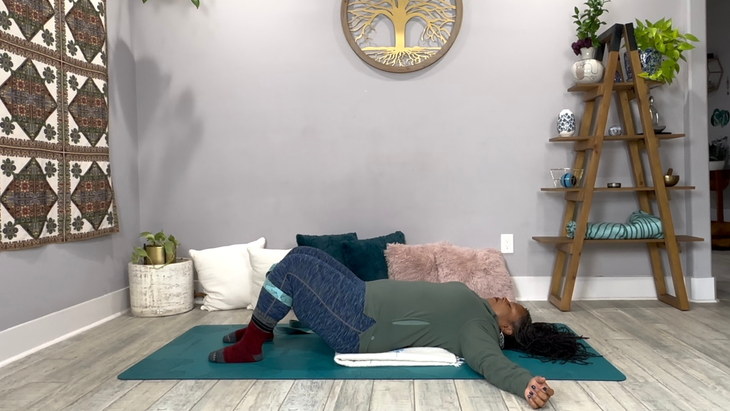
Caston-Miller considers this slight backbend to be restorative yoga’s tiniest heart-opener. “This is a wonderful pose to practice to reset your nervous system without a lot of set up,” she says.
How to: “Place one blanket folded rectangularly underneath the body from the tips of your shoulder blades to your tailbone,” instructs Caston-Miller. The rest of your shoulder blades can rest on the floor. Knees are bent, feet flat on the ground hip-distance apart. You can place a strap around your legs, just below the knees, to hold them comfortably in neutral rotation and in alignment with the hips. Rest here for at least 8 minutes.
4. Restorative Wheel

Consider Restorative Wheel, which relies on a mountain of props beneath you, the ultimate at-home restorative yoga pose. “I never believed I could rest in this pose, but it is an incredible opener across the entire front body,” says Caston-Miller. “It’s almost impossible in a studio unless there are yoga chairs, but at home, you have so many props to create this pose.”
How to: Caston-Miller suggests a two-level approach, propping bolsters, sofa cushions, pillows, and rolled blankets in the shape of a flat-topped pyramid. Once that’s built, reclinee your body on your pyramid. Bend your knees and plant your feet hip-distance apart and parallel, directly under your knees, and indulge in the opening pose.
5. Constructive Rest
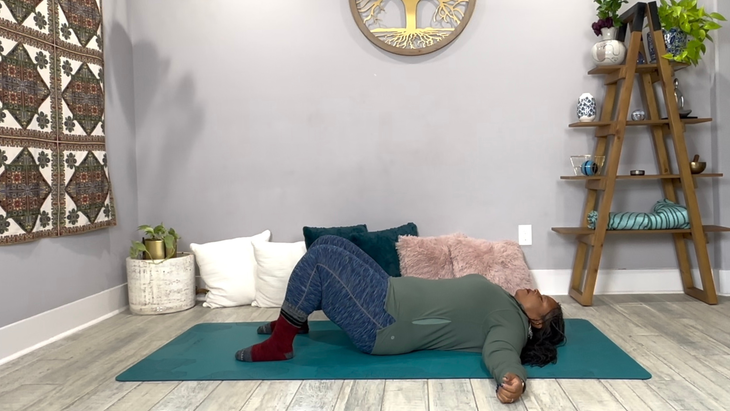
Constructive Rest is essentially Savasana with your knees bent, which means it can be done pretty much anywhere.
How to: To make the pose truly tension-less, Caston-Miller has a suggestion. “Many people will knock knees for this pose, but I prefer to keep them in alignment with my hips,” she says. “If you tend to work to hold the legs in neutral, a strap or a blanket wrapped around the legs will do the work for you.” Cover your eyes with a mask or pillow and rest and reset here for 8-10 minutes minimum.

